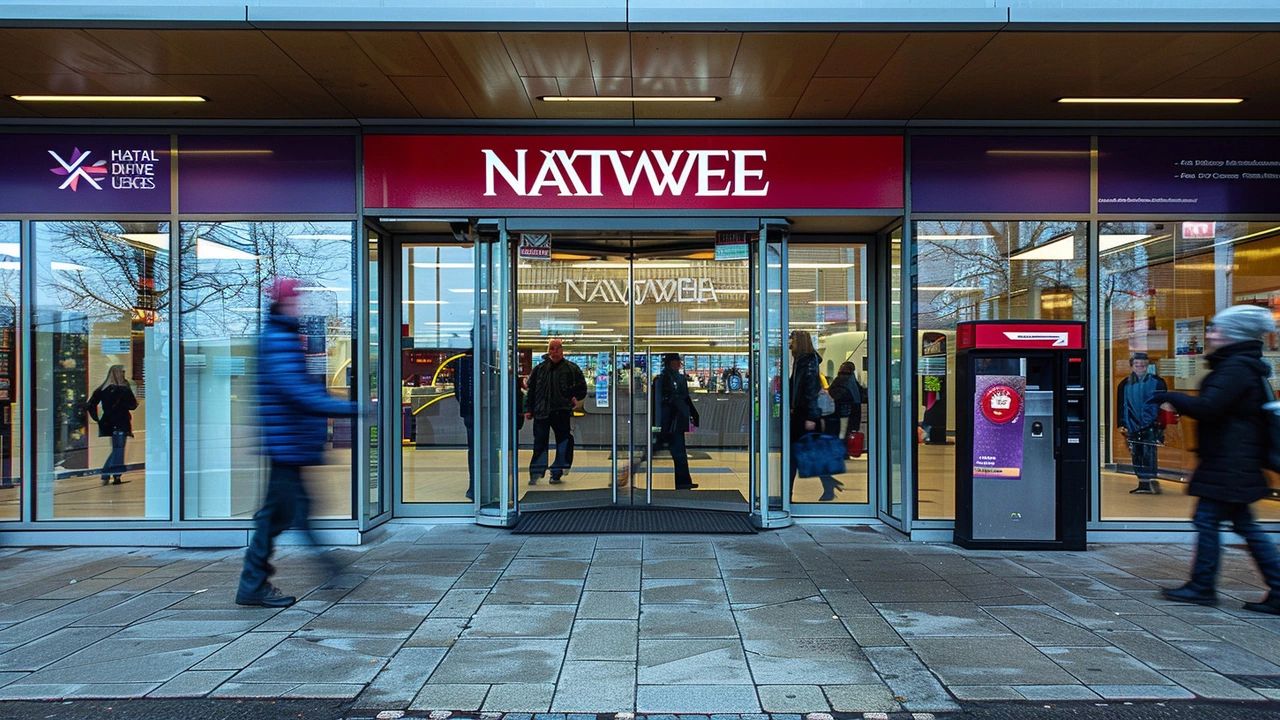On Tuesday morning, the banking landscape in the UK faced a turbulent start as thousands of NatWest customers encountered major issues with the bank's app and website. The disturbance began as early as 5:30am, leaving countless individuals unable to access their accounts, perform routine transactions, or even view their balances. Reports indicate that by 8am, there were 3,834 complaints lodged on DownDetector, a platform known for monitoring online service interruptions.
NatWest customers from various walks of life voiced their frustrations through social media channels, painting a vivid picture of the widespread chaos. Sue Edwards, a user from Manchester, shared her exasperation on Twitter, describing how she was unable to transfer funds to her daughter studying abroad. Mark Nitowski, a small business owner, expressed concerns about the potential delays in paying his suppliers due to the outage. Similarly, Amrik Singh and Jan Godfrey, both long-standing customers, reported significant challenges in accessing their accounts to pay essential bills.
Many users encountered a frustratingly consistent error page instructing them to close the app and attempt again. However, such a simple fix provided little comfort, as the issue persisted across multiple attempts. “It's incredibly stressful not being able to access your funds, especially when you have critical payments to make,” remarked Jan Godfrey. This sentiment echoed across various posts, underlining the critical role digital banking plays in daily life.
NatWest was swift to acknowledge the issue, issuing a statement that their technical teams were investigating the outage with the highest priority. “We understand the inconvenience this causes our customers and are working diligently to resolve it as quickly as possible,” a spokesperson for the bank stated. Despite the assurance, the incident drew attention to the vulnerabilities of digital banking systems that millions rely on daily.
As the hours ticked by, some customers began speculating about the cause of the disruption. Was it a cyberattack? A system failure? While NatWest did not immediately clarify the root cause, cybersecurity experts weighed in. John Bradshaw, a reputed cybersecurity analyst, noted that while outages can occur for a myriad reasons, it's imperative for companies to have robust contingency plans. “Banks, due to the sensitive nature of the data they handle, are often targeted for cyberattacks. However, infrastructure failures can also result in significant downtimes,” he commented.
Meanwhile, the customer service department at NatWest was inundated with calls and messages. “I'm on hold for over twenty minutes now,” shared Mark Nitowski in a tweet. The frustration was palpable and understandable given the interruption was occurring during the morning hours when many people conduct their banking activities.
The Impact on Businesses and Individuals
The outage's ripple effect was felt far and wide. Small businesses, which often rely on timely transactions for their day-to-day operations, faced potential delays and financial implications. “I had to pay my suppliers today, and this delay might affect my stock,” remarked Nitowski, highlighting the critical dependence on seamless banking operations.
For individuals, the inability to access funds, especially during emergencies, is nothing short of distressing. Amrik Singh shared his plight of needing to top up his utility card to keep his heating running, a task he couldn't complete due to the outage. For Sue Edwards, her concern for her daughter studying abroad added a layer of anxiety. “I wanted to ensure she had enough money for her groceries and rent. This delay is causing me undue stress,” she expressed.
Lessons in Resilience and Contingency
Incidents like these spotlight the importance of building resilient digital infrastructure and having contingency measures in place. Bradshaw stressed the need for banks to employ redundant systems that can take over seamlessly should one system fail. “Customer trust is paramount in the banking sector. Such outages, if frequent, can erode confidence,” he added.
NatWest, while working on a resolution, will likely face a myriad questions once the dust settles. Customers will demand transparency regarding the cause and measures the bank will put in place to prevent such occurrences in the future. “It's about ensuring this doesn’t happen again. We need reassurances that such critical services will remain reliable,” said Singh.

Restoration Efforts and Future Considerations
As the bank works to rectify the situation, there is also a broader conversation to be had about the future of digital banking. With increasing reliance on technology, banks worldwide need to invest heavily in not only preventing such outages but also in swiftly addressing them should they occur. Ensuring that customer service can handle an influx of queries during such times is equally critical. “Training and resources for customer service agents are crucial. They are the frontline during such crises,” noted Bradshaw.
By late morning, there were signs that NatWest's efforts to resolve the issue were bearing fruit, with some customers reporting restored access. However, the ordeal left a lasting impression. The next steps for the bank will not only involve technical fixes but also rebuilding trust with their customer base.
This incident serves as a stark reminder of the digital age's dual-edged sword - convenience coupled with vulnerability. For NatWest and indeed banks everywhere, constantly evolving and upgrading their digital frameworks will be key to ensuring reliability and fostering customer confidence in the ever-expanding world of online banking.



